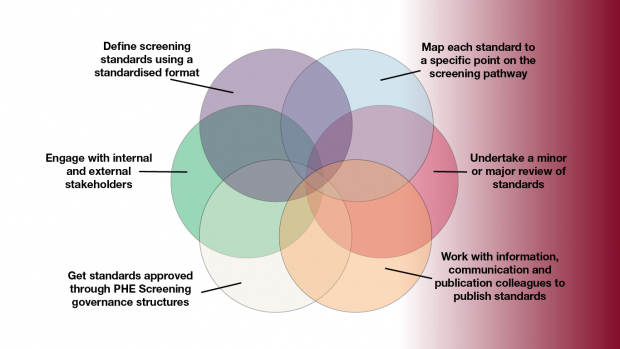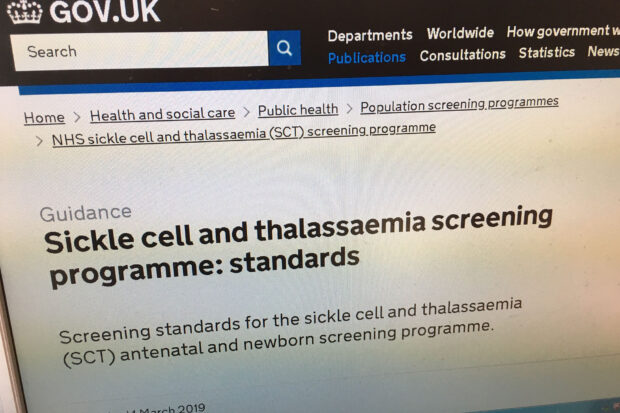
We do lots of important work in PHE Screening but I believe setting standards for each of our 11 screening programmes is among the most important.
Nothing stands still in screening for very long, so we make sure standards remain fit for purpose by regularly reviewing them and looking at what the data is telling us. Our quality assurance process checks if the standards are met and encourage continuous quality improvement.
A sub-group of our national data group has worked on and revised our internal PHE Screening standards framework.
This toolkit gives a clear step-by-step guide about how we develop, review and publish standards. It provides a clear, consistent and auditable approach to producing standards across all 11 programmes and includes all the tools needed, whether you are new to this work or very experienced.
It makes sure standards:
- underpin continuous improvement to support the programmes’ aims
- are SMART (specific, measurable, achievable, realistic and timely)
- are fit for purpose for all stakeholders, including providers and commissioners

Data collection can be seen as a burden but a clearly defined process of standards development and modification will give stakeholders confidence. It also shows we have done our best to produce the most meaningful standards.
The framework consists of a set of documents to drive the standards review and development of internal processes. As such it is not available in the public domain.
However, we hope the framework development will result in more consistent, timely and easier to interpret screening standards across all screening programmes.
PHE Screening blogs
PHE Screening blogs provide up to date news from all NHS screening programmes. You can register to receive updates direct to your inbox, so there’s no need to keep checking for new blogs.
4 comments
Comment by Phil Bullock posted on
A basic principle in setting standards is that the standard should be monitored by the area of the programme it is designed to assure - not by other downstream parts of the programme as currently happens in cervical where laboratories are expected to provide monitoring information for sample takers. The alternative is to provide robust over arching IT that monitors standards seamlessly across all areas of a given programme.
Comment by Nadia Permalloo posted on
Thank you for your comment
Comment by Irene Stratton posted on
This isn't clear in the diagram but is there review of relevant research and scientific literature to inform standards? I published work showing that those who had missed diabetic eye screening appointments were at high risk of having sight threatening retinopathy and this has lead to a new DESP quality standard. I would like to hope that there's a team doing horizon scanning to see if there's other work being published that might suggest new standards.
Comment by Nadia Permalloo posted on
Thank you for your comment. We have 2 steps in the framework to ensure we review relevant research and scientific literature to inform standards. These are: 1. the major review process and 2. engagement with internal and external stakeholders. We work with the PHE Screening evidence team, programme advisors and clinicians to do this. In addition, the standards review is driven by the programme managers and SQAS staff who are also members of our Research Advisory Groups. As such, they are in a very good position to link new research with programme developments, research and associated standards.